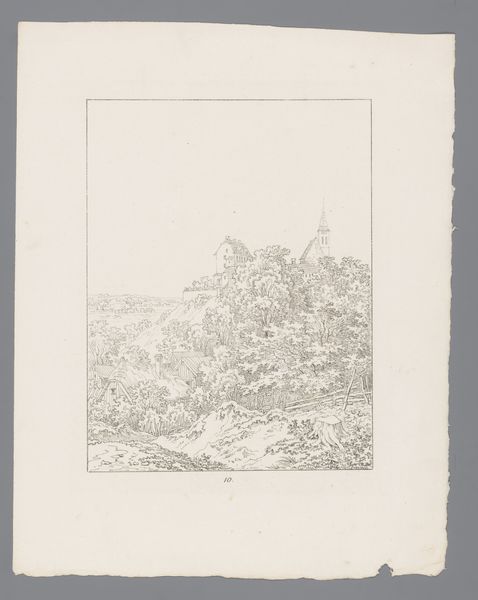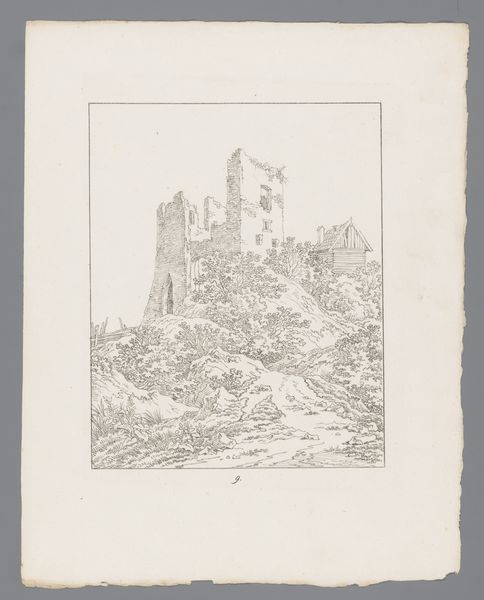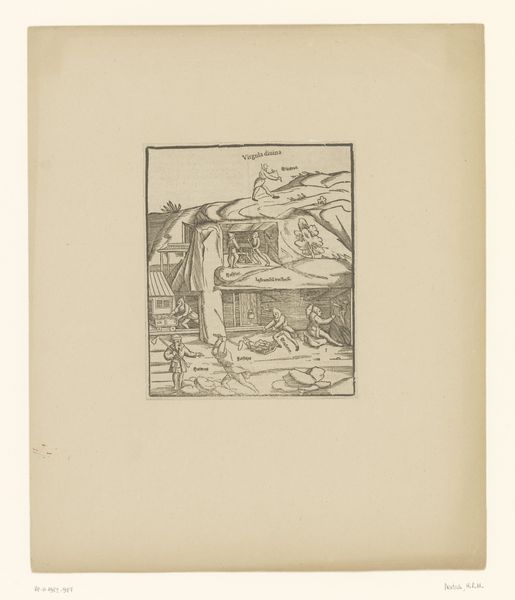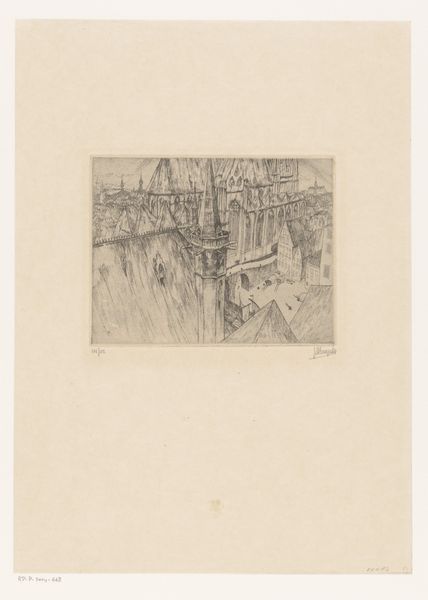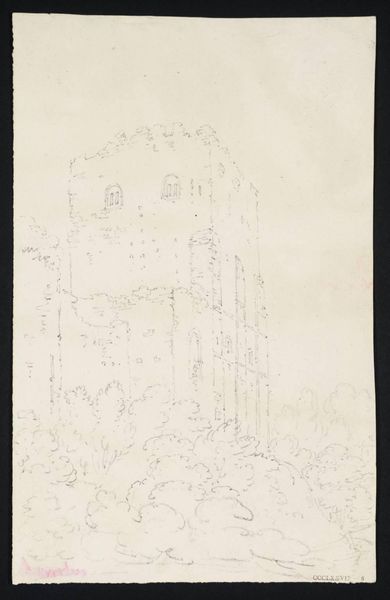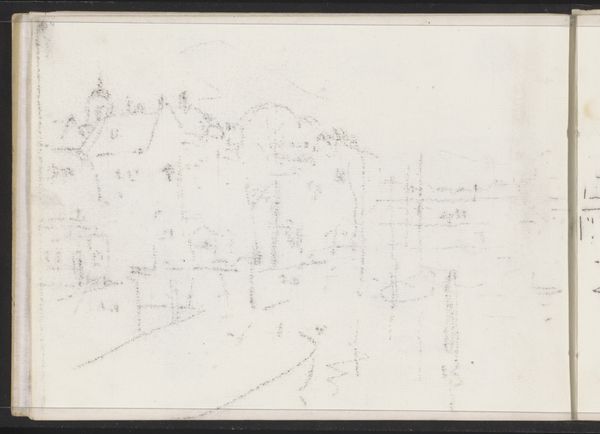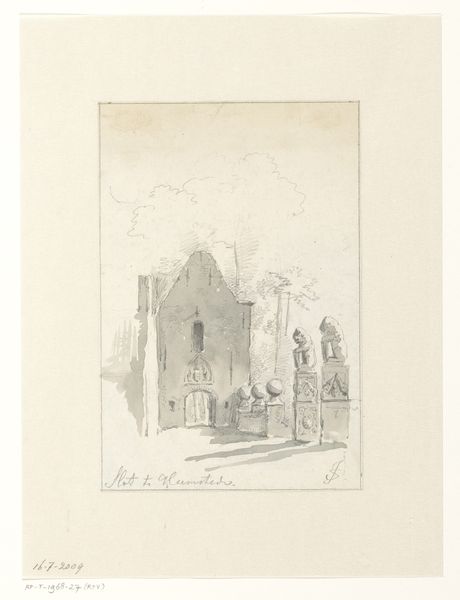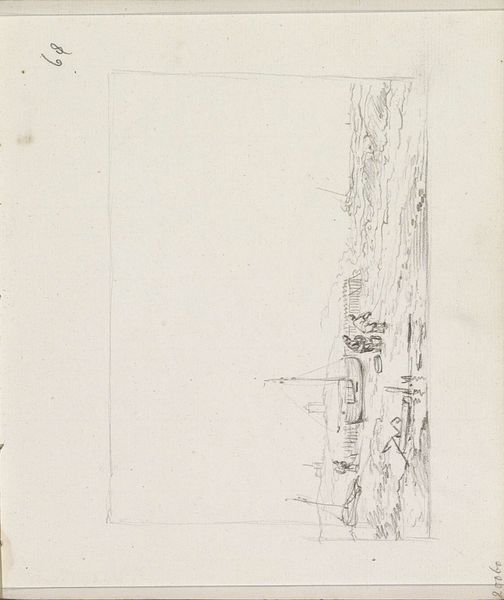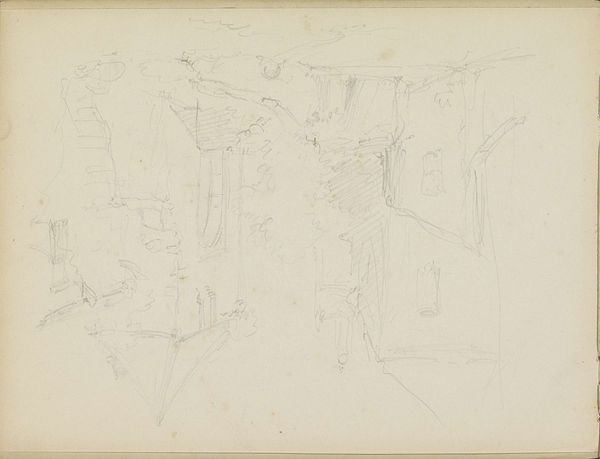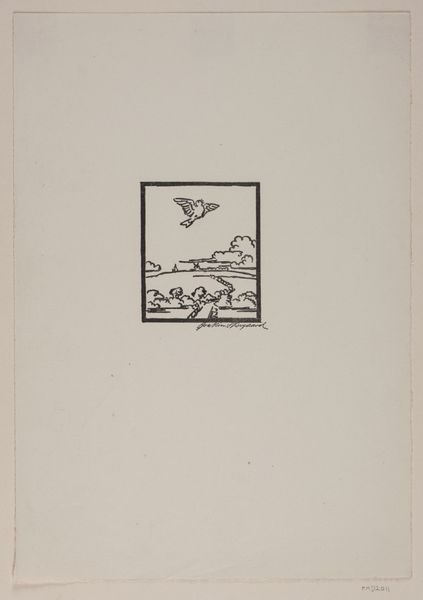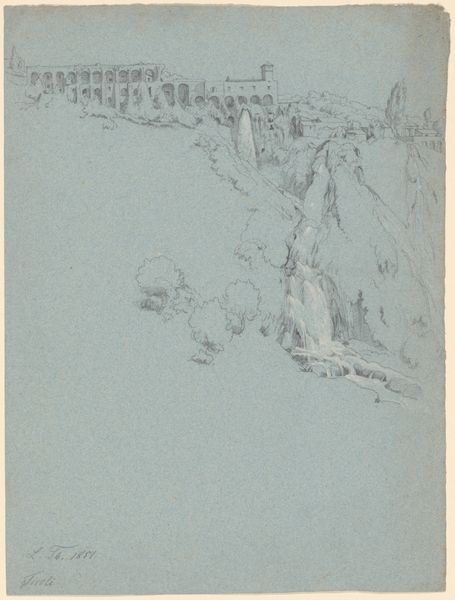
drawing, paper, pencil
#
drawing
#
aged paper
#
homemade paper
#
ink paper printed
#
sketch book
#
landscape
#
paper
#
personal sketchbook
#
sketchwork
#
romanticism
#
pencil
#
ink colored
#
line
#
sketchbook drawing
#
cityscape
#
storyboard and sketchbook work
#
sketchbook art
#
realism
Dimensions: height 370 mm, width 296 mm
Copyright: Rijks Museum: Open Domain
Editor: This is "Gezicht op een ruïne" by Max Josef Wagenbauer, created in 1823. It’s a pencil drawing on paper, and the level of detail in such a light medium is remarkable. The delicate lines capturing the ruined structure create this sense of faded grandeur, but the lively vegetation seems to breathe life back into it. What stands out to you in this work? Curator: Well, seen from a historical lens, this drawing provides a window into 19th-century European society's fascination with ruins, a key element of the Romantic movement. Consider how Wagenbauer isn’t just depicting a ruined structure; he’s presenting a specific vision of history, of nature reclaiming what was once a seat of power. Do you see how that perspective challenges conventional ideas of progress? Editor: I do! It makes me think about how society chooses to preserve and memorialize certain narratives. Are we meant to see the ruin as a cautionary tale, or perhaps something beautiful in its decay? Curator: Precisely. And think about the public role of such imagery at the time. These depictions often circulated as prints, shaping popular perceptions of the past. This "sketchbook drawing" also presents us an insight into a personalized artistic journey. Editor: It's like Wagenbauer is inviting us to consider the power structures of the past and the evolving relationship between humanity and the natural world, through his personal study. I never considered a simple sketch could carry such social and historical weight! Curator: Exactly! The drawing isn't just a depiction of a ruin. It reflects societal anxieties, aspirations, and the role of art in shaping public consciousness. Editor: It makes me realize how even seemingly straightforward landscape drawings are entangled with much larger historical and cultural conversations. I'll never look at ruins the same way!
Comments
No comments
Be the first to comment and join the conversation on the ultimate creative platform.
